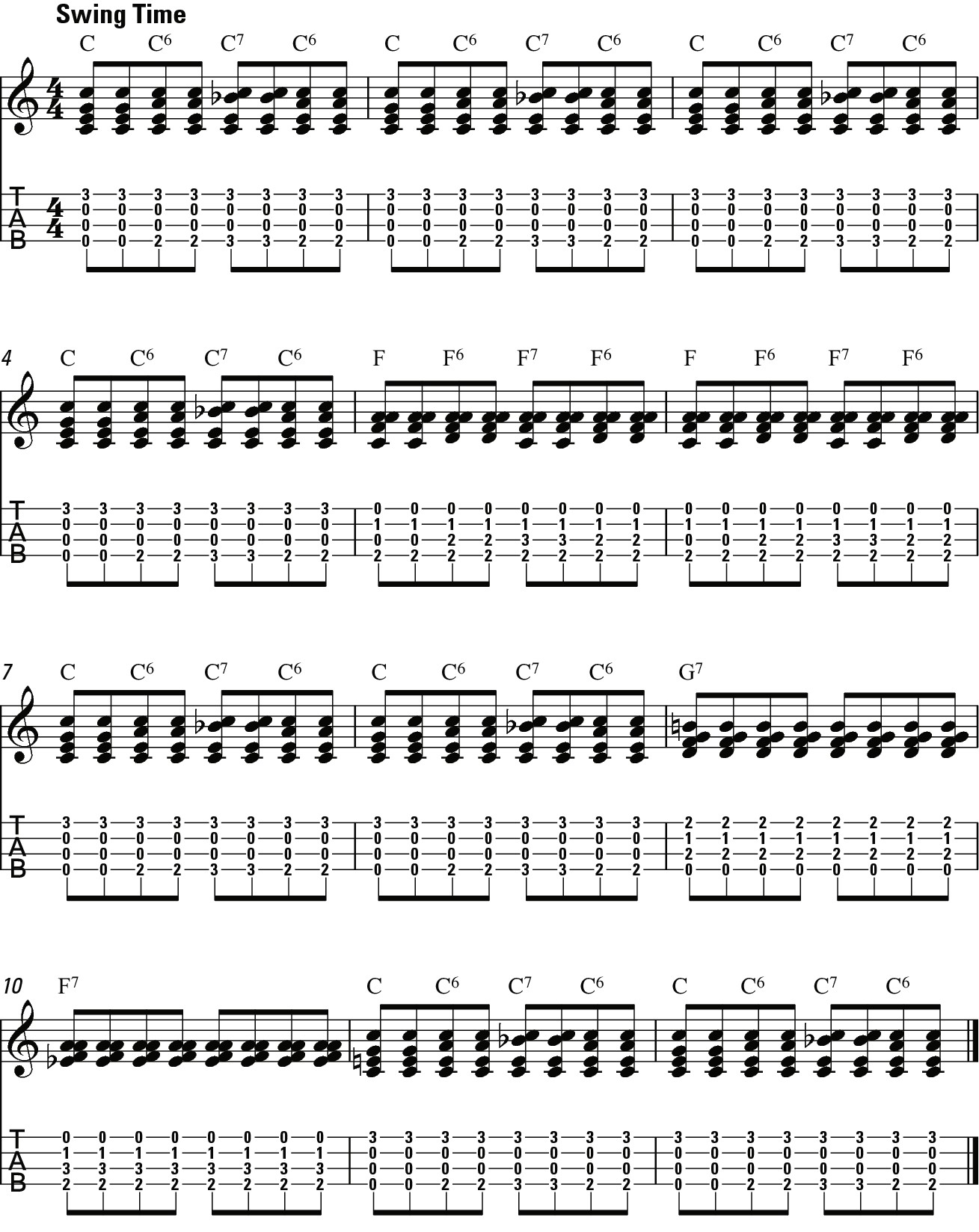Ukulele For Dummies (52 page)
Read Ukulele For Dummies Online
Authors: Alistair Wood

 This pattern also works well on the uke in the key of A (see Figure 12-11 and listen to Track 69, Part 4).
This pattern also works well on the uke in the key of A (see Figure 12-11 and listen to Track 69, Part 4).
Figure 12-11:
12-bar shuffle in the key of A.

Playing the blues to keep the blues at bay!
Blues music grew out of the African-American social and racial struggles in the US. The blues philosophy is along the following lines: no matter what they take away from us, we still have our own voice and music.
So, in an important way and despite the association with feeling blue, the blues is celebratory and an attempt to lift the spirits. Despite the sad nature of many blues' lyrics, the mere fact of sharing your problems in your own voice, and the fellow-feeling that it creates with listeners, means that âsinging the blues' is in fact a way of overcoming feeling down.
Turning the Blues Around
The blues
turnaround
(the part at the end of the progression before it goes back to the beginning) is my absolute favourite thing to play on the ukulele: the basis is really simple but the variations are endless.
 At its root, the blues turnaround is just four
At its root, the blues turnaround is just four
chromatically descending
notes â where the notes go down one fret at a time. Figure 12-12 (Track 70, Part 1) shows the basic blues turnaround in the key of A. Note that you pick the single notes with your thumb and strum the full chords at the end.
Figure 12-12:
Tab for the basic blues turnaround.

 Figure 12-13 (Track 70, Part 2) contrasts the descending line with a static open A-string and ends with the V chord (in this case, E7). In this version, pick the E-string with your thumb and the A-string with your index finger.
Figure 12-13 (Track 70, Part 2) contrasts the descending line with a static open A-string and ends with the V chord (in this case, E7). In this version, pick the E-string with your thumb and the A-string with your index finger.
Figure 12-13:
Tab for the blues turnaround with open A-string.

 Figure 12-14 (Track 70, Part 3) adds double stops to the line (check out Chapter 11 for a whole section on using double stops).
Figure 12-14 (Track 70, Part 3) adds double stops to the line (check out Chapter 11 for a whole section on using double stops).
Figure 12-14:
Tab for the blues turnaround with double stops.

 Figure 12-15 (Track 70, Part 4) gets even fancier and shows what you can do with the turnaround. The figure introduces
Figure 12-15 (Track 70, Part 4) gets even fancier and shows what you can do with the turnaround. The figure introduces
triplets
(three notes that take up one beat) and descending double stops and adds a little melody line on the A-string.
Figure 12-15:
Tab for the tricked-out blues turnaround.

 Notice the E7 chord that comes in just before the next bar (a common trick added to the 12-bar blues pattern).
Notice the E7 chord that comes in just before the next bar (a common trick added to the 12-bar blues pattern).